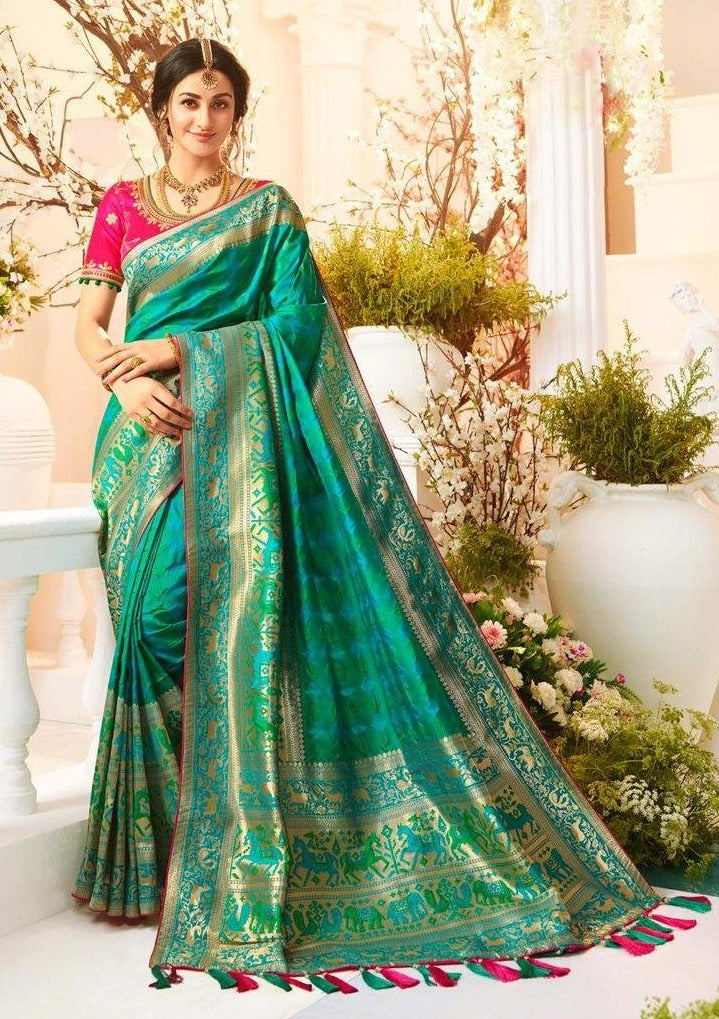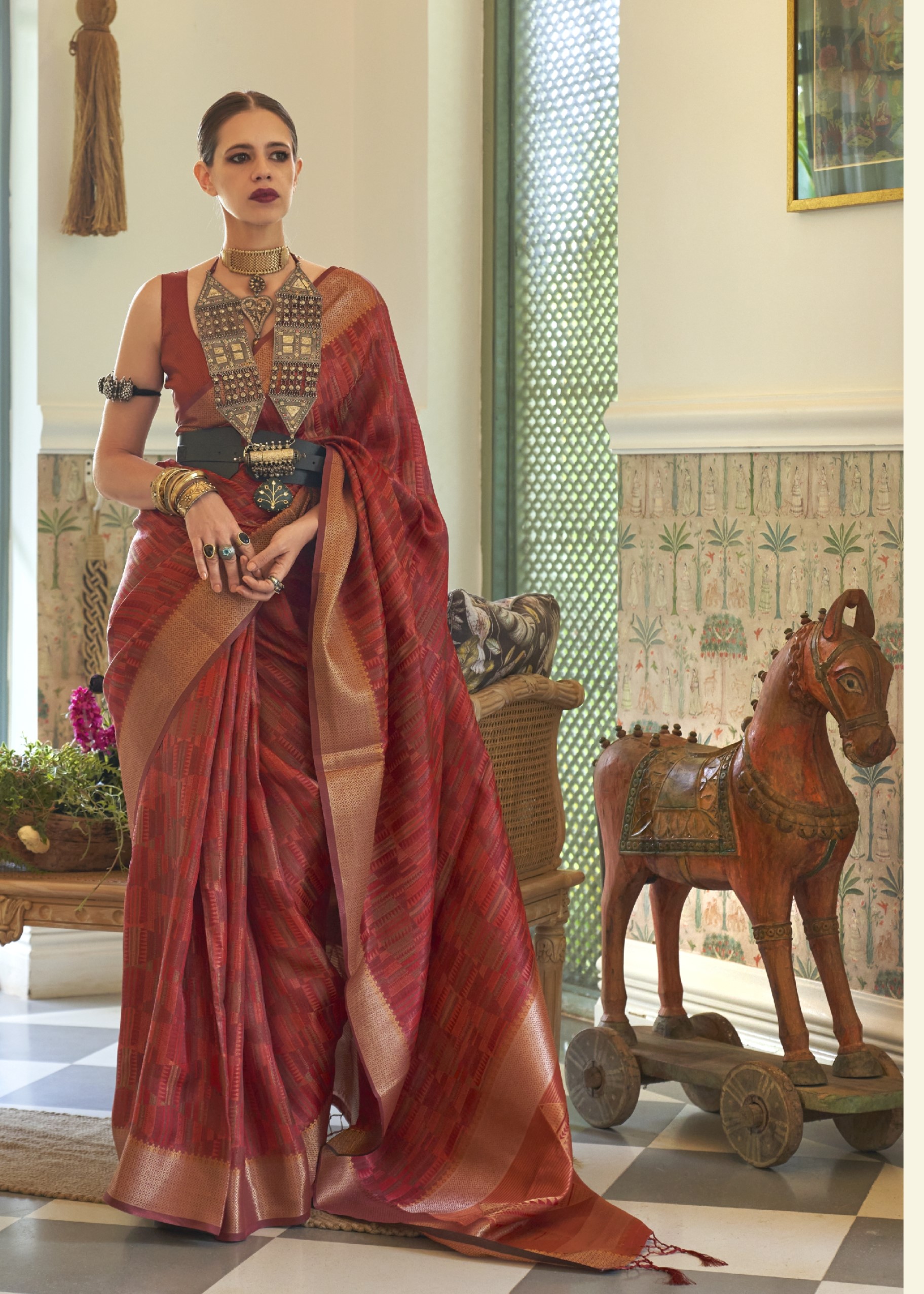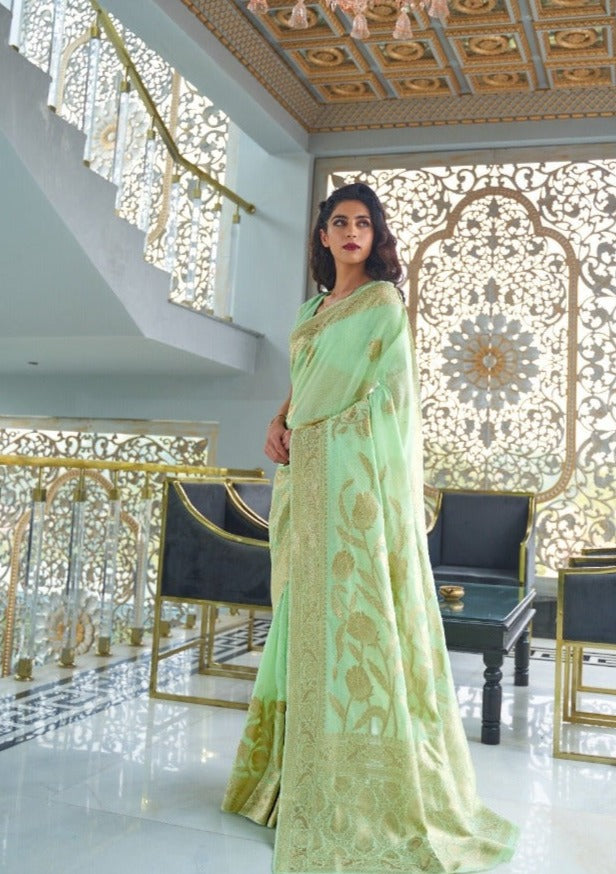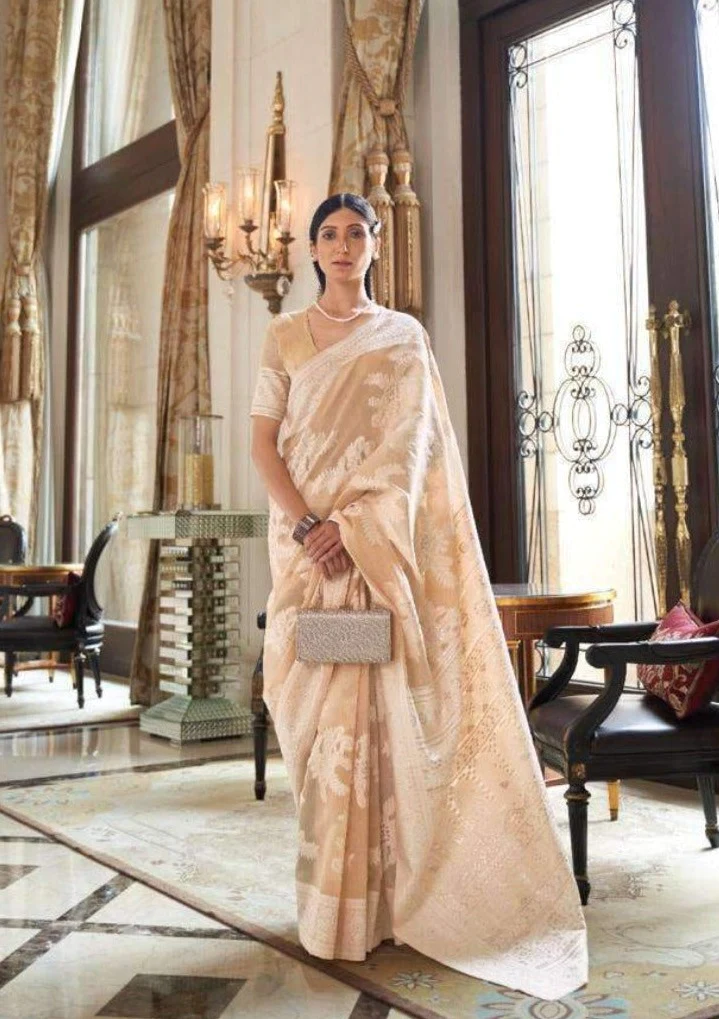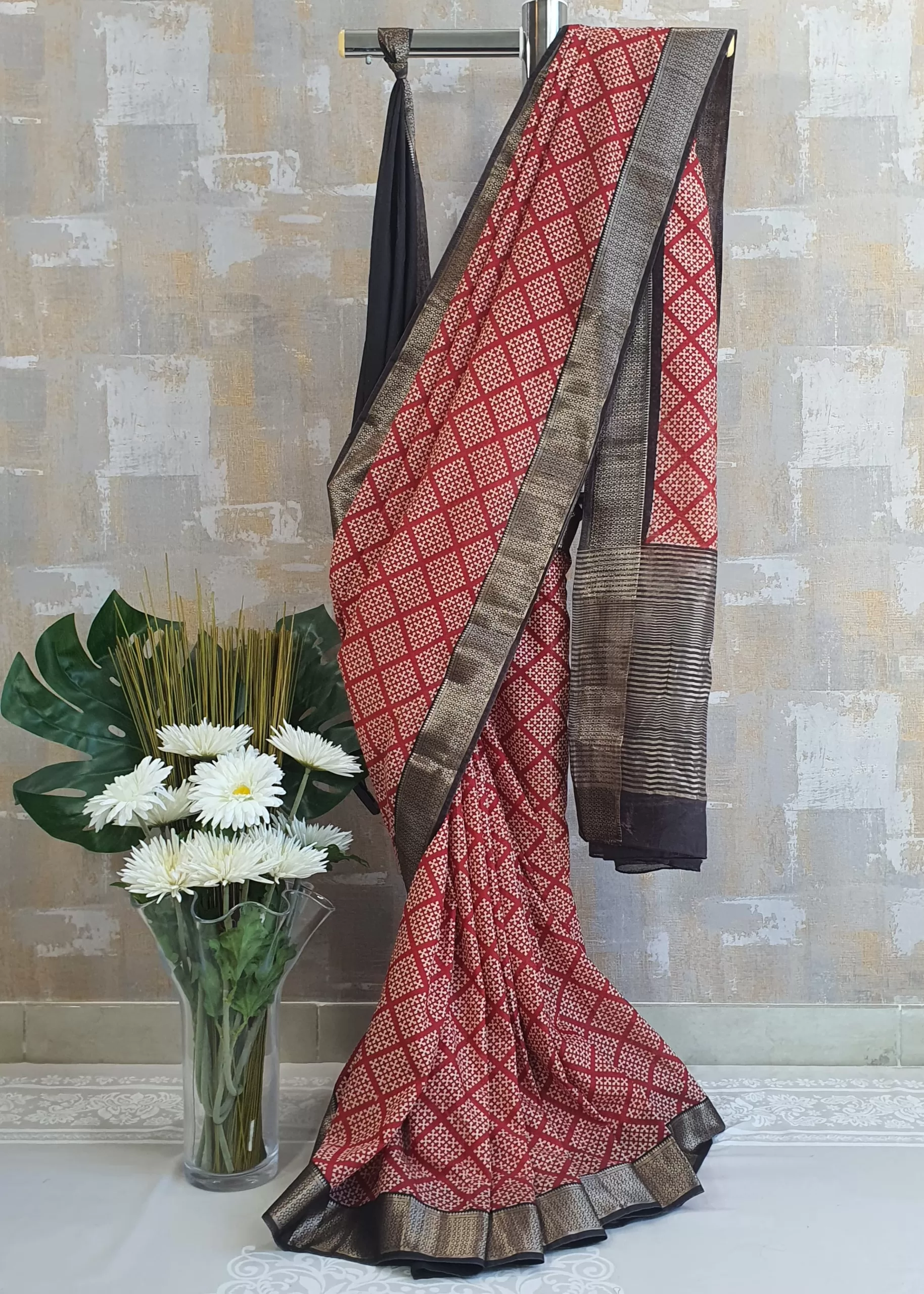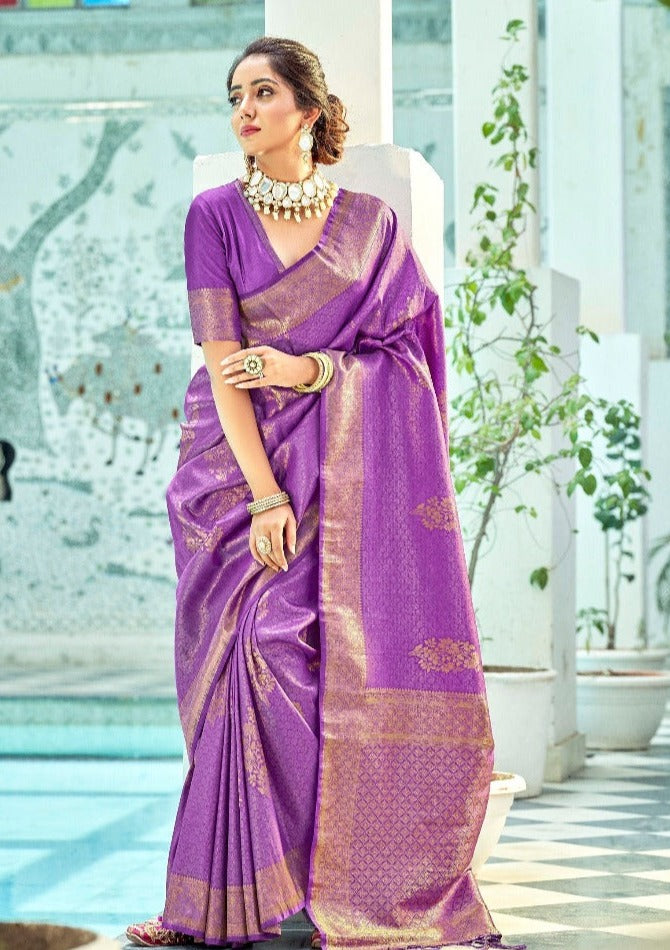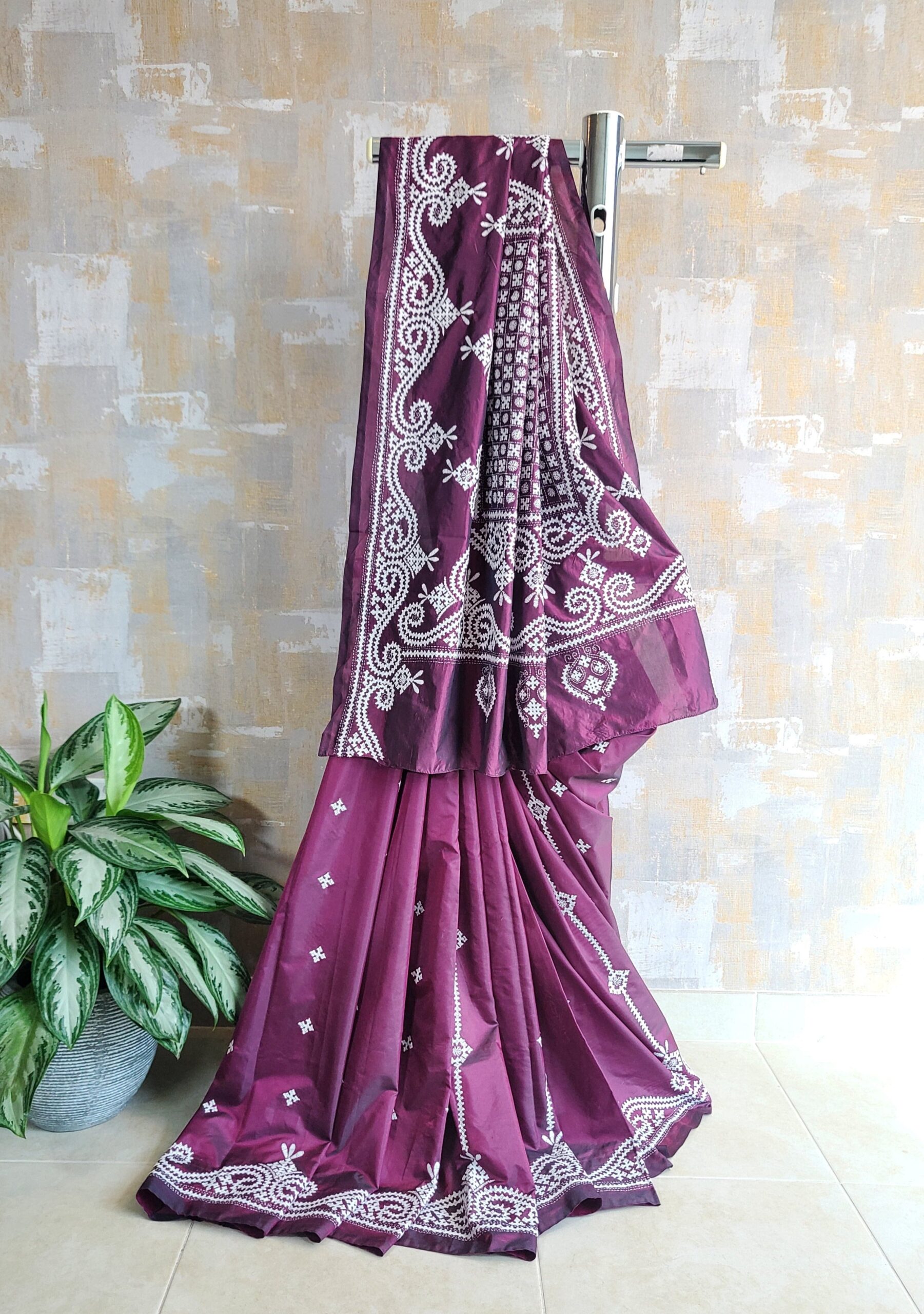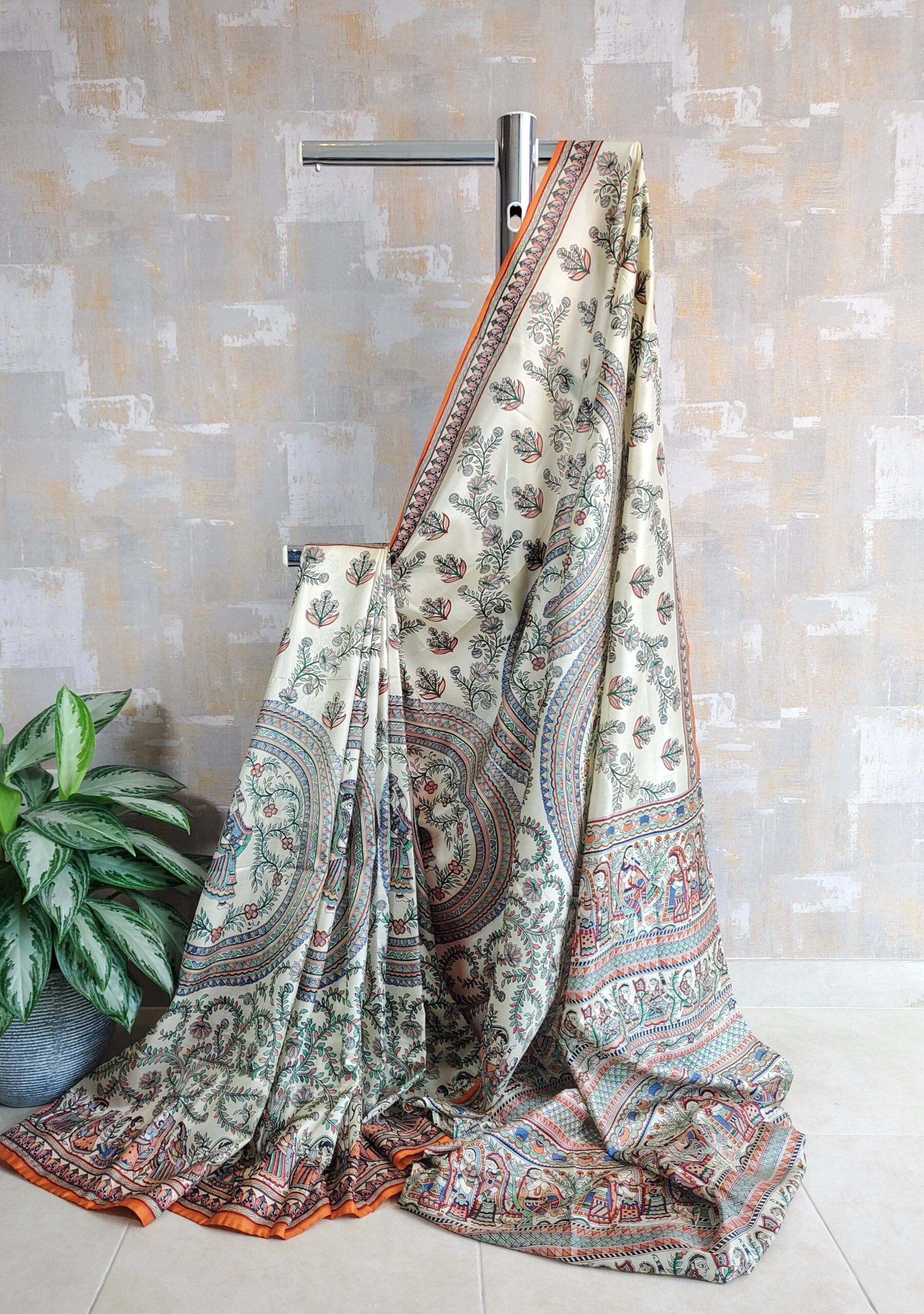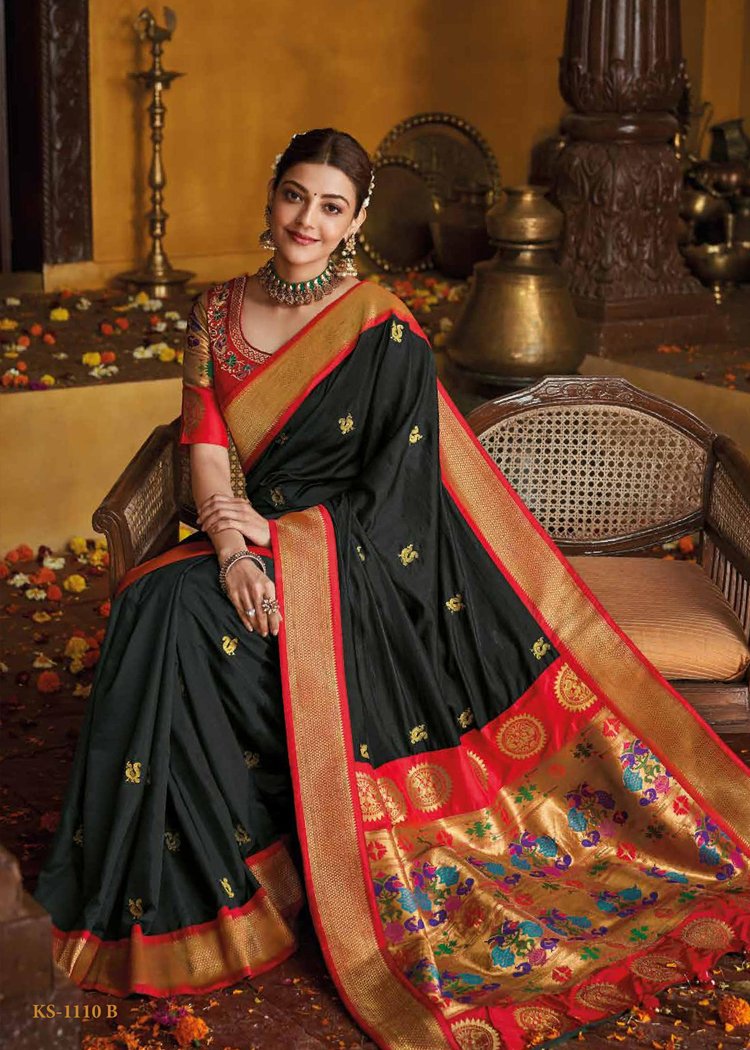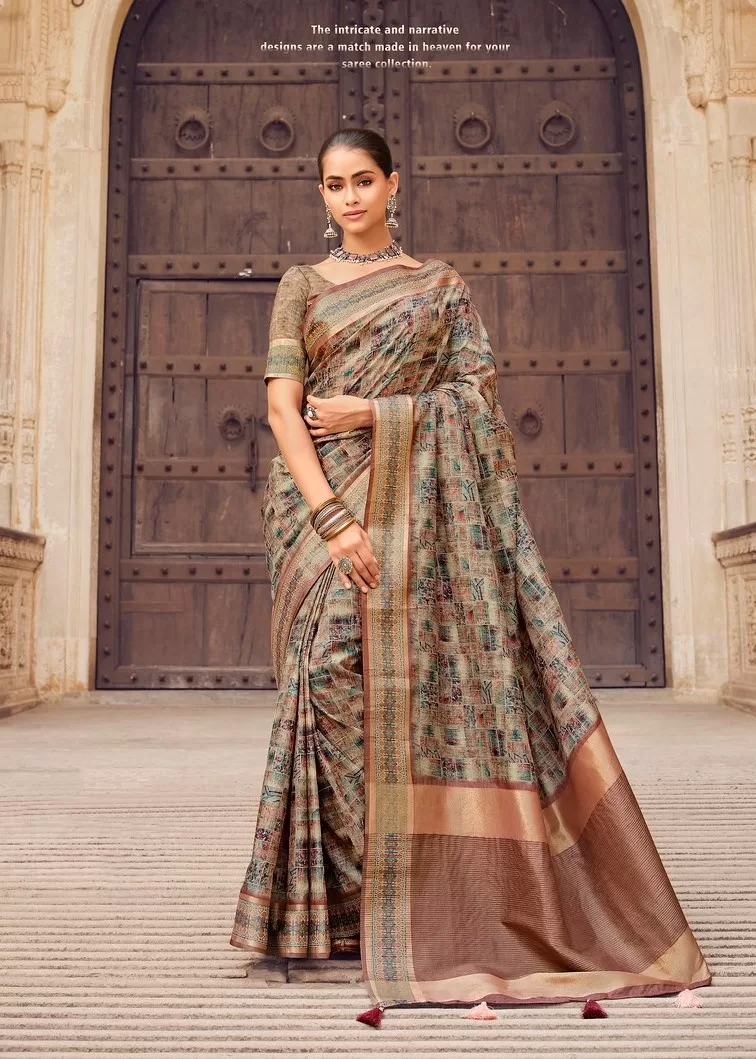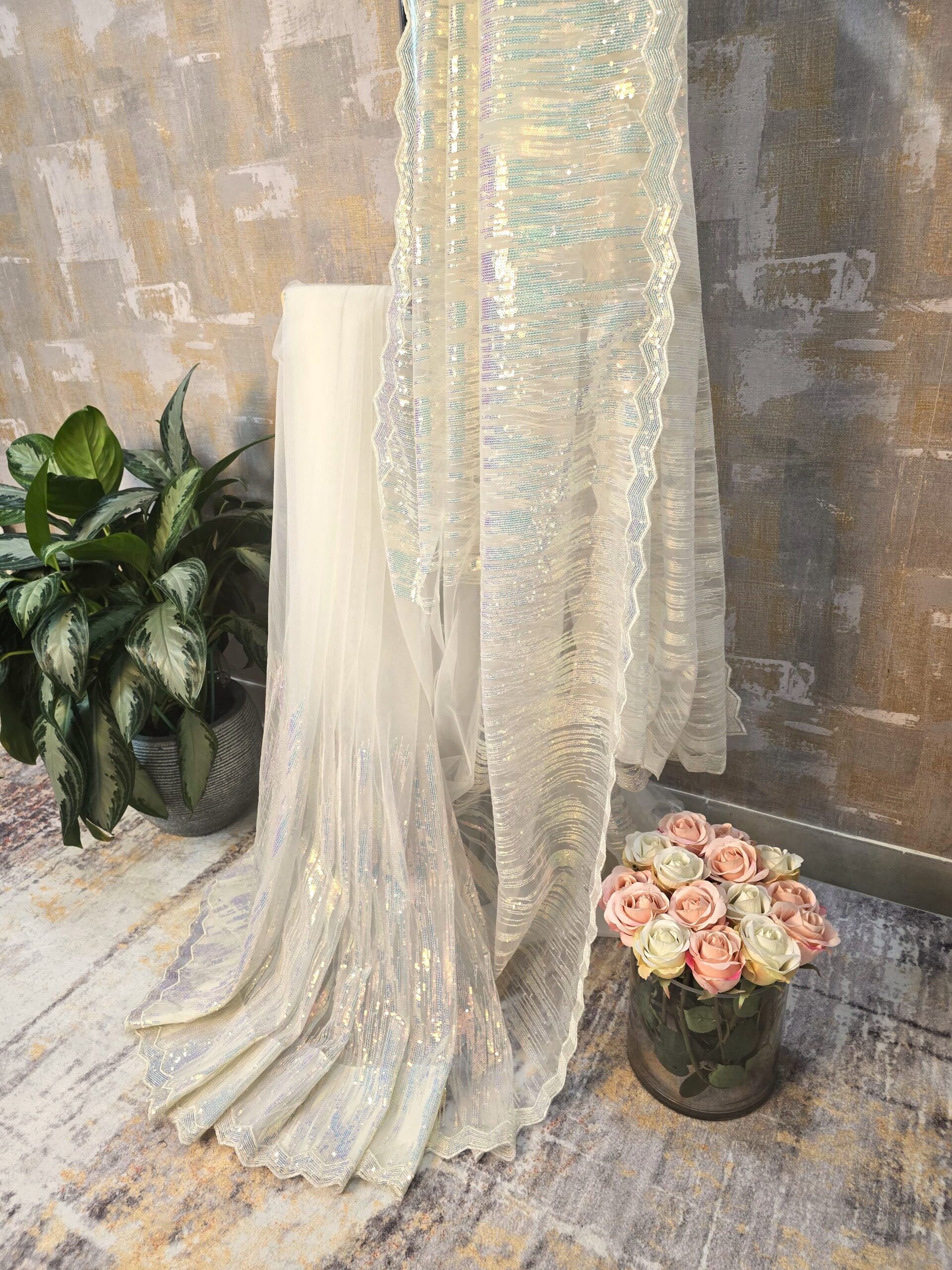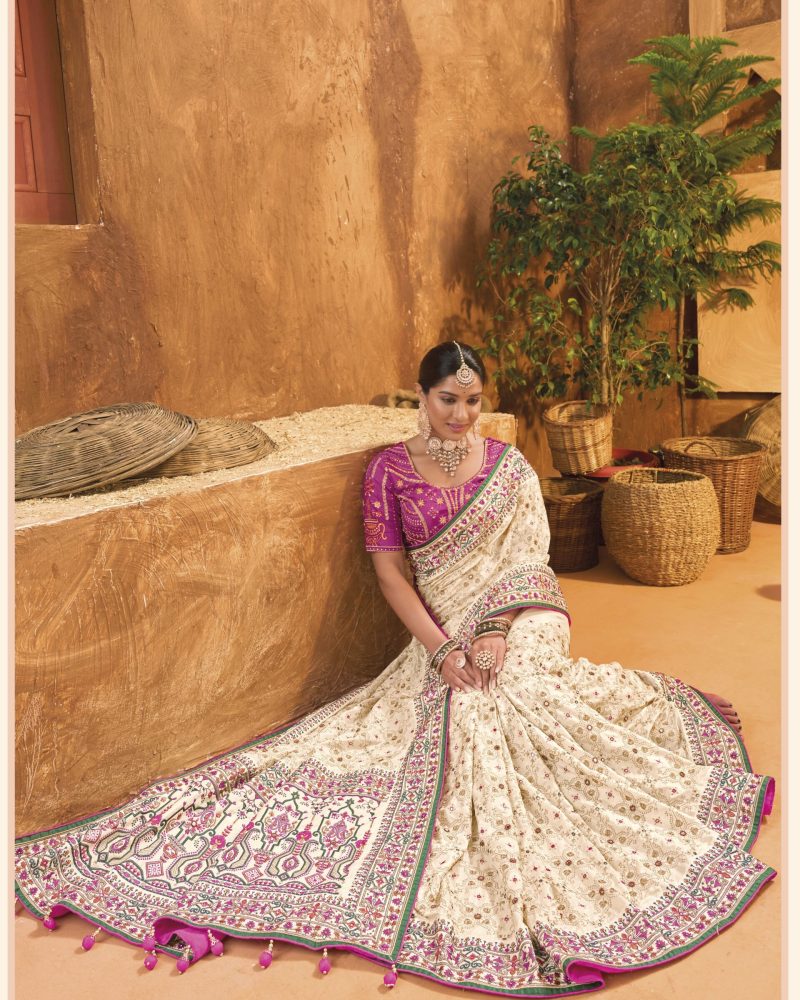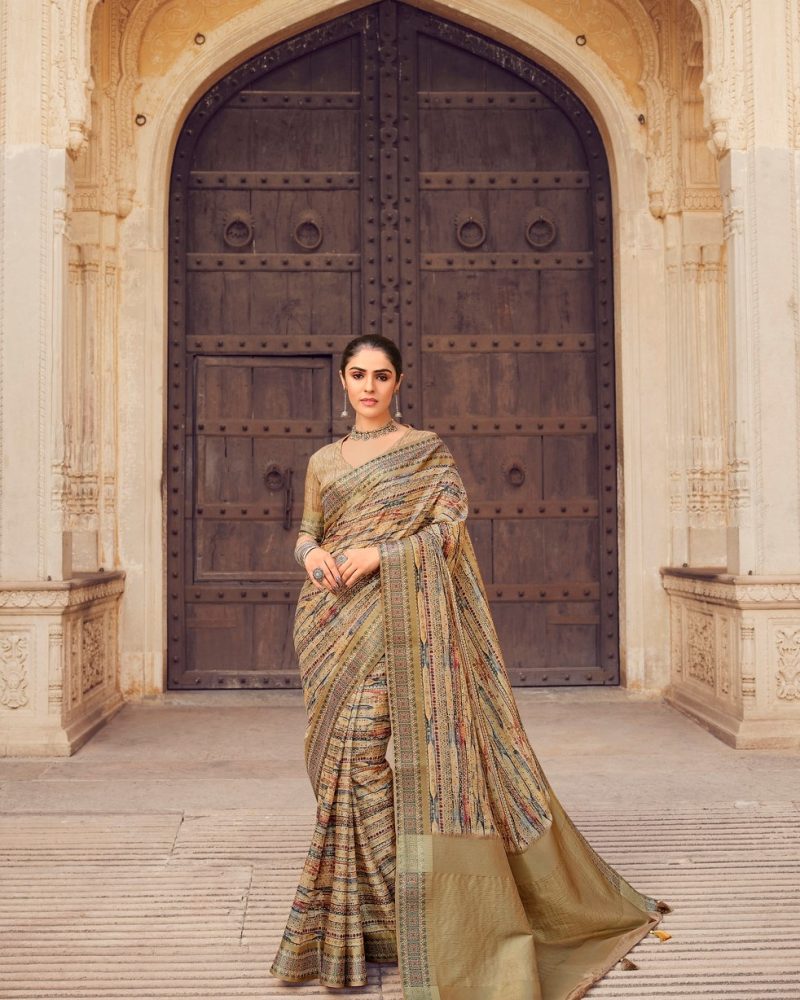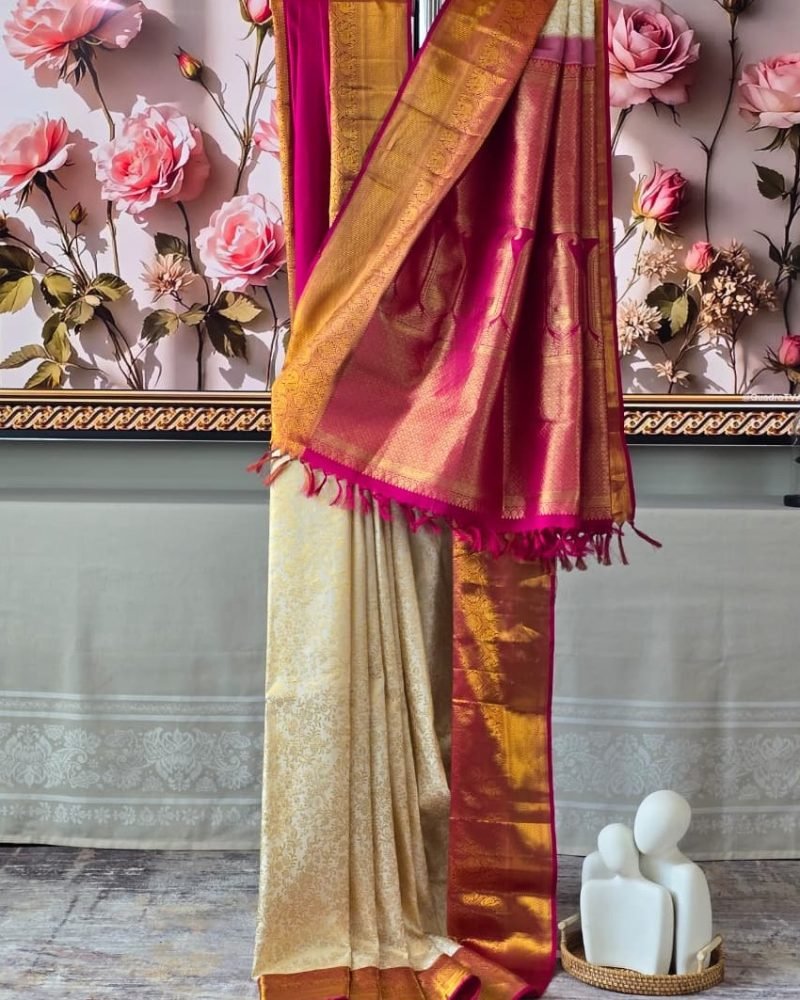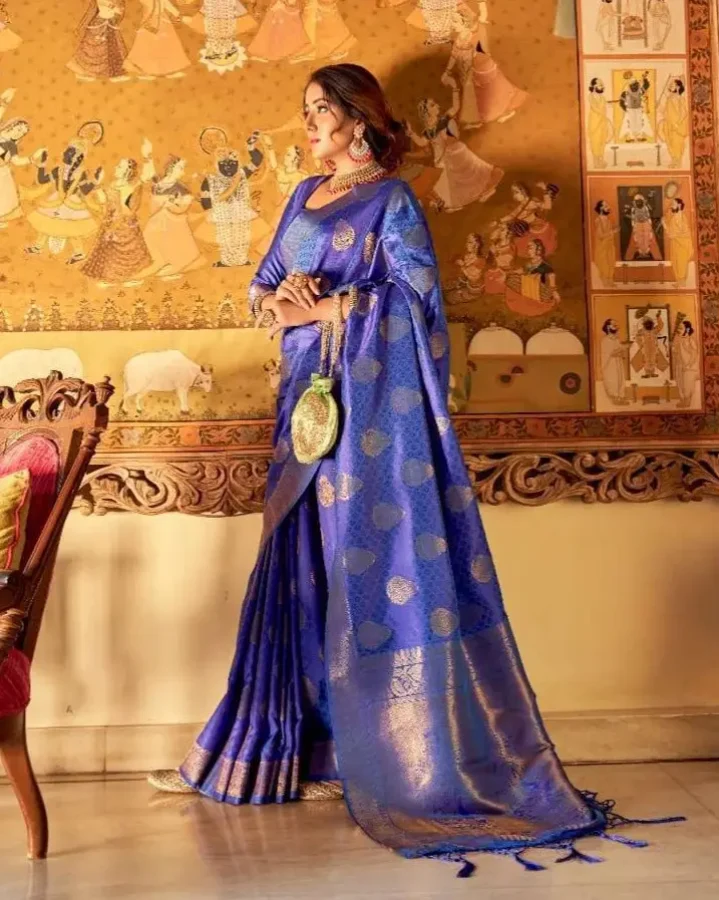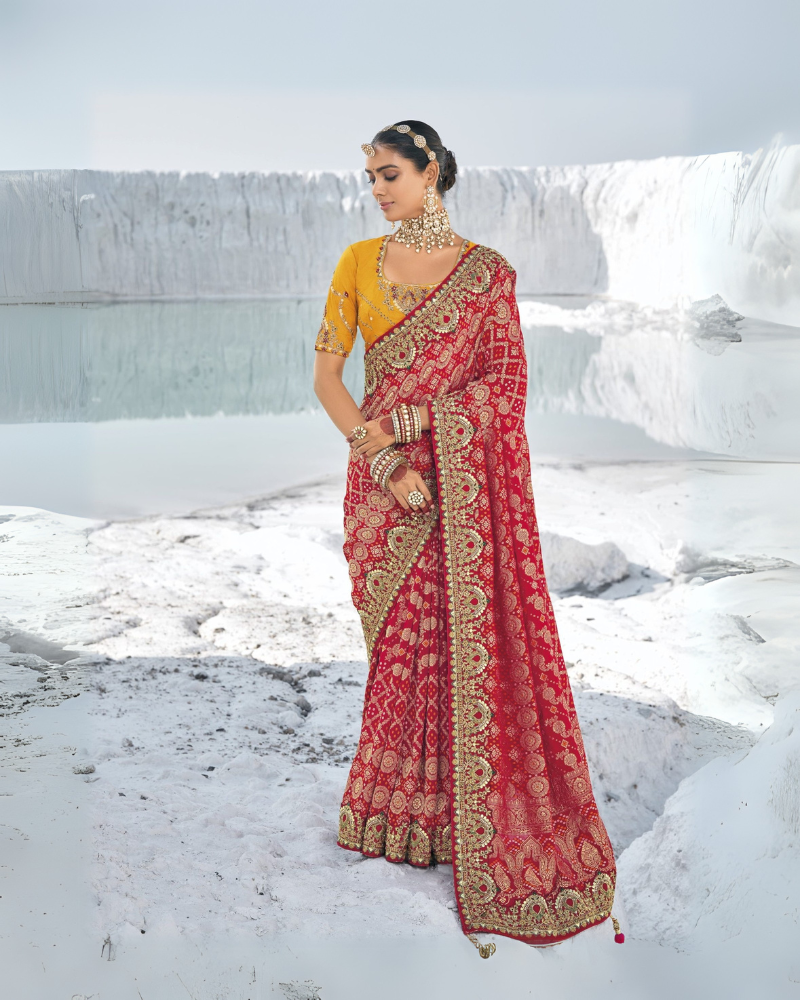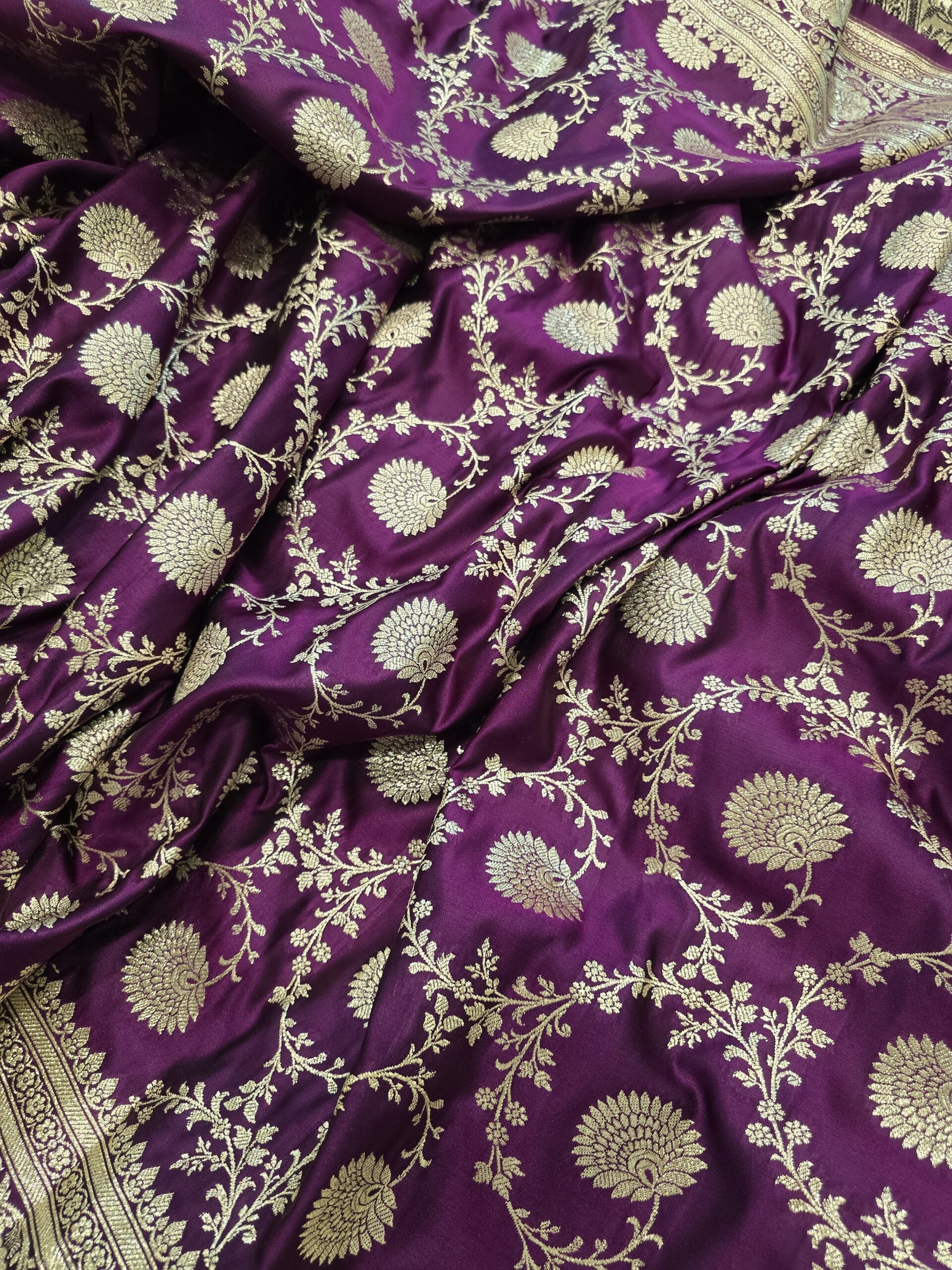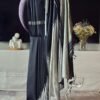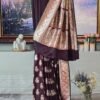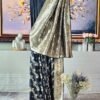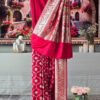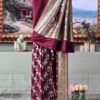Kashi, now known as Varanasi or Banaras, is one of the oldest living cities in the world. Located on the banks of the sacred Ganges River in Northern India, it is revered as a spiritual and cultural hub. It is also the birthplace of the iconic Banarasi saree—an epitome of luxury, heritage, and exquisite craftsmanship.
The History of Banarasi Sarees
The legacy of Banarasi sarees is deeply intertwined with India’s cultural and spiritual heritage. References to Banarasi textiles can be found in sacred texts like the Rig Veda (1000 BCE), the Ramayana, the Mahabharata, and Jataka Tales.
During the Mughal era, especially under Emperor Akbar, Banarasi weaving flourished with influences from Persian art and Islamic aesthetics. This multicultural fusion shaped the grandeur and versatility of Banarasi designs as we know them today.
Types of Banarasi Weaves
One of the most fascinating aspects of Banarasi sarees is the diversity in weaving techniques that bring each piece to life. Each type of Banarasi weave reflects a unique cultural, artistic, and technical legacy, offering not just visual beauty but also a rich story woven into the fabric.
Let’s explore the five primary weaving styles that define the Banarasi tradition:
1. Shikargah Banarasi Saree
The term Shikargah comes from the word Shikar, which means hunting. Shikargah Banarasi sarees are famous for their elaborate hunting scene motifs, often depicting animals like elephants, deer, lions, and hunters with bows, arrows, and spears, all intricately woven into the fabric.
Inspired by Mughal art and Persian influence, these designs were originally woven for royalty and nobility. The motifs symbolized power, protection, and prosperity, and were popular in ceremonial garments.
Creating a Shikargah saree requires immense skill and time. Artisans use complex jacquard looms to create the detailed motifs that often run across the body or pallu of the saree.
These sarees are perfect for women who love rich storytelling through textiles and want a piece that stands out for its narrative beauty.
2. Jaal Banarasi Saree
A Jaal is a network or lattice. Jaal Banarasi sarees are known for their all-over intricate floral or foliate patterns, usually crafted using gold or silver zari threads.
The entire saree is covered with patterns and there’s no empty space which gives it a dense, opulent look. Common motifs include lotuses, vines, mango leaves, and other nature-inspired elements.
Weaving a Jaal saree is labor-intensive, as the pattern is consistent across the fabric. It requires perfect synchronization of the loom and the artisans, often taking weeks to complete.
Unlike Kadhua or Meenakari sarees where motifs may be spaced out or varied, Jaal weaves maintain uniformity and continuity in design.
Ideal for highly favored for bridal wear, religious ceremonies, and festivals, thanks to their regal and heavy appearance.
3. Kadhua Banarasi Saree
Kadhua refers to a specific hand-weaving technique unique to Varanasi. In this method, each motif be it a flower, paisley, or geometric shape is individually woven into the fabric, rather than using a continuous weave.
This technique ensures there are no loose threads on the back of the saree, making it durable and cleanly finished. It also allows for more variety in design placement. Because every motif is hand-inserted, this is one of the most time-consuming and difficult techniques in Banarasi weaving.
While Jaal or Jungla sarees have repetitive patterns throughout, Kadhua sarees highlight individual, spaced-out motifs, giving the saree an elegant and balanced look.
Ideal for women who prefer understated elegance and superior craftsmanship over heavy all-over designs.
4. Jungla Banarasi Saree
The word Jungla means “jungle” or forest. True to its name, the Jungla Banarasi features dense, flowing floral patterns or creeping vines (bel) that cover the fabric in an almost organic fashion.
This weave is considered one of the most complex and challenging, as it combines the Kadhua technique with Jaal-style patterning. Each part of the floral pattern is woven individually using Kadhua, yet the layout spreads across the saree like a Jaal.
It gives the illusion of walking through an enchanted garden, with lifelike flowers and leaves spread all over. Unlike Jaal, which may have symmetrical and repeated motifs, Jungla designs are free-flowing, more natural, and visually dynamic.
Ideal for those who want a dramatic and luxurious look, perfect for weddings, receptions, and grand occasions.
5. Meenakari Banarasi Saree
Meenakari, a term often associated with enamel work in jewelry, refers to the use of colorful silk threads in Banarasi sarees. These threads, usually red, green, yellow, blue are added alongside the zari to enhance the motifs with vibrant hues.
This involves an additional step in the weaving process, where colored threads are skillfully incorporated into the zari patterns without disturbing the weave’s integrity.
Meenakari work adds festive vibrancy and regional flair, especially resembling Gujarati and Rajasthani aesthetics.
While traditional Banarasi sarees may use only gold or silver zari, Meenakari sarees stand out due to their multi-colored detailing, often making them more playful and contemporary.
Ideal for women looking for a saree that’s rich yet youthful, suitable for both traditional functions and modern festive occasions.
Banarasi Sarees by Fabric Type
While the weaving technique defines the visual intricacy of a Banarasi saree, the base fabric determines its texture, weight, drape, and overall feel. Banarasi sarees are crafted using different types of silk and silk-like materials, each with its own distinct characteristics.
Let’s explore the most commonly used fabrics in Banarasi sarees and understand what makes each of them unique:
1. Katan Banarasi Saree
Katan is a type of pure silk made by twisting together two silk threads, resulting in a smooth, strong, and lustrous fabric. It is considered one of the most premium materials for Banarasi sarees.
Katan silk sarees are known for their rich texture, structured drape, and royal sheen. The fabric has a slightly crisp finish, which helps maintain the shape of the saree and highlights intricate weaving.
Ideal for formal, bridal, and festive wear, especially when you’re looking for something traditional, elegant, and long-lasting. The zari work appears especially striking on Katan due to its smooth surface.
Key Characteristics:
- Pure silk
- Heavy and rich appearance
- Strong and durable
- Best suited for traditional Banarasi weaves like Kadhua or Jaal
2. Khaddi (Georgette) Banarasi Saree
Khaddi Georgette is a handwoven version of georgette, a lightweight, sheer fabric made from twisted silk yarns. It has a slightly crinkled texture and a soft, flowing drape.
Khaddi Banarasi sarees are light, airy, and easy to carry, making them perfect for long hours of wear. Despite being lightweight, they still carry the elegance of zari work.
Ideal for women who prefer contemporary elegance over traditional heaviness. Perfect for cocktail functions, day events, or when you want to wear Banarasi without the bulk.
Key Characteristics:
- Lightweight and fluid
- Slightly sheer with a graceful fall
- Modern look with traditional weaving
- Great for semi-formal and formal occasions
3. Tussar Banarasi Saree
Also known as Kosa silk, Tussar is derived from the cocoons of wild silkworms. It has a textured, slightly coarse feel and is known for its natural golden-beige hue.
Tussar silk has a subtle sheen, a matte-finish elegance, and feels cool and breathable against the skin. It absorbs dye beautifully, creating rich and earthy tones.
Perfect for those who appreciate understated luxury and want a Banarasi saree that feels more organic and artisanal. It’s also a great choice for warmer climates.
Key Characteristics:
- Natural texture and sheen
- Slightly rougher feel compared to Katan
- Eco-friendly and breathable
- Suitable for day events, office wear, or artistic gatherings
4. Tissue Banarasi Saree
Tissue is a luxurious fabric woven with golden or silver metallic threads (often zari), sometimes blended with silk, to give a shimmering, translucent effect. It feels like silk but looks like molten gold or silver.
Tissue sarees are delicate, glitzy, and eye-catching. The fabric has a natural stiffness due to the metallic yarns, which gives it structure and shape.
Ideal for weddings, high-end parties, or evening events where you want a saree that catches the light and makes a statement. These sarees are often paired with minimal jewelry, letting the fabric do the talking.
Key Characteristics:
- Shiny and rich appearance
- Sheer and structured
- Delicate and best handled with care
- Perfect for ultra-glamorous occasions
Why Banarasi Sarees Are So Special
Banarasi sarees are more than just garments—they are treasured heirlooms passed down through generations. Known for their luxurious silk, rich zari work, and intricate designs, these sarees are a staple in every Indian bride’s wedding trousseau and are worn at the grandest celebrations.
From pre-wedding functions to the big day, it adds unmatched splendor. Brides often choose Jaal or Jungla Banarasi sarees for their intricate beauty and photogenic appeal.
At Sarees By Muhurat, we bring you an exclusive collection of authentic banarasi sarees, handwoven by master artisans from Varanasi. Whether you’re looking for a traditional bridal saree or a lightweight georgette for festive wear, we have something for every occasion.
